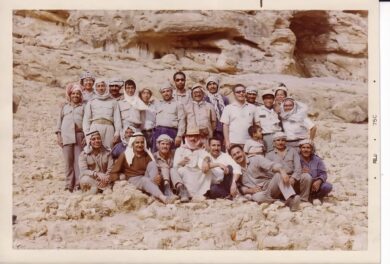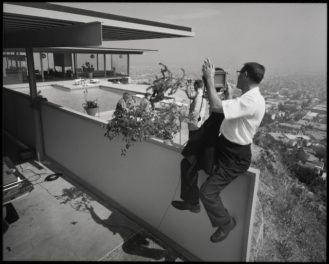
Le Chimborazo vu depuis le plateau de Tapia, 1810, Alexander von Humboldt. Engraving. Published in Vues des Cordillères, et monumens des peuples indigènes de l’Amérique. Getty Research Institute, 85-B1535
This is the story of one of the tallest volcanoes in the world, Ecuador’s Mount Chimborazo, and of two extraordinary characters of the 19th century: the German explorer and scientist Alexander von Humboldt and the Venezuelan liberator Simón Bolívar. Both are said to have climbed Chimborazo, although one of them only in his dreams.
On June 23, 1802, Humboldt, along with the French botanist Aimé Bonpland and the Ecuadorian noble creole Carlos Montúfar, as well as three local guides, began the 20,700-foot-high climb to the top of Chimborazo.
Humboldt was a well-heeled explorer. Two years before this climb, he had embarked on an expedition throughout Latin America. During this trip, he completed geological and plant research, collected specimens, measured temperatures, air pressure, and magnetic fields, and described the cultures and social worlds of the different countries he visited.
Humboldt’s view of nature was innovative at the time and his research was influential in creating modern biogeography, the science that studies the plants and animals based on where they are found. Moreover, he described and researched the world as a living entity, one built on interconnections. For him, the world’s flora and fauna always influenced one another. However, his writings went beyond a strict focus on science and throughout his texts, he was critical of slavery and colonialism.
He didn’t reach the top of Mount Chimborazo and only wrote about the climb a few times. The first mention is in a letter to his brother, Wilhelm, dated November 25, 1802, which is filled with dramatic details about his adventure.
Years later, in the 1810 book Vues des Cordillères, et monumens des peuples indigènes de l’Amérique, Humboldt published two engravings of Chimborazo based on his sketches, showing the view before and after the climb. In Chimborazo seen from the plain of Tapia, the mountain appears majestic with its snowy peak, the llamas, cacti, and local people dot its slopes, but with a point of view that is drifting away.
Even if he didn’t see the climb as a milestone, the mountain that Humboldt described as a cathedral would eventually become overlapped with his own image as a symbol of his American journey. For example, in some of the portraits that artists contemporaneous to him made, such as those by Freidrich Georg Weitsch (1810) or Karl von Steuben (1812/1821), the volcano appears in the background as part of the Humboldtian iconography.
A Real and Imagined Climb
Twenty years later, in 1822, Simón Bolívar wrote My Delirium on Chimborazo, a narrative poem in which he described climbing the volcano as an allegory for the liberation of America. By 1821, Bolívar had led the independence efforts of various countries fighting against the Spanish Empire and forming La Gran Colombia, which included Colombia, Ecuador, Panama, and Venezuela. Peru and Bolivia would follow in the next years.
There is no evidence that Bolívar actually climbed Chimborazo, but he referenced Humboldt in his poem. “I left behind the footsteps of Humboldt and set out to climb beyond the eternal belt of cloud shrouding Chimborazo,” he wrote. There he had a conversation with Time who warned him, “Hide not the secrets which Heaven has revealed to you! Speak the truth to mankind!”
Later, he did climb a different volcano with Humboldt—Mount Vesuvius.
Humboldt and Bolívar had met soon after the scientist returned to Europe in 1804, and even though little is known about their relationship, there is evidence of their friendship throughout their correspondence. Humboldt’s work and ideas of the New World likely influenced Bolívar. Some authors, like Gonzalo Picón Febres, have even stated that their climb of Mount Vesuvius was the moment in which Bolivar decided to begin the fight for Latin America’s independence. What we do know with certainty, thanks to Humboldt’s words in a letter from 1822, is that it was around this time when both promised to fight for the freedom of the new continent.
The symbolic image of Chimborazo has continued to evolve to this day. For Humboldt, it became the allegory to his American adventure and for Bolívar, an emblem of liberty. Today the volcano stands on the center of Ecuador’s coat of arms, displaying its grand natural beauty and that of its people, who refer to it in their Indigenous language as Taita, or the father.




Comments on this post are now closed.